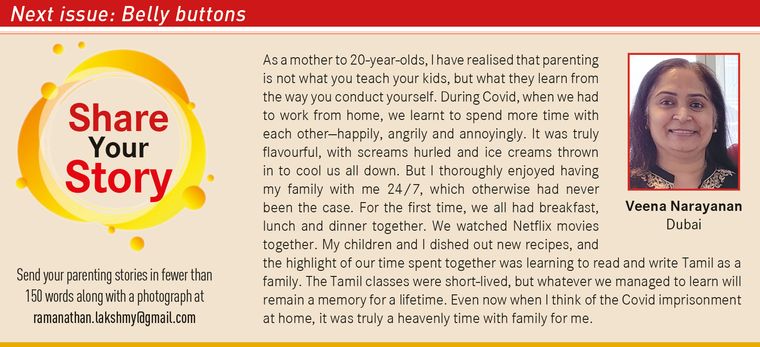WHEN I BEGAN writing my book, I had numerous conversations with first-time parents, grandmothers, doctors and midwives. That process helped me understand, accept, question and go on to conduct a scientific review of many of our practices and beliefs. It was during that time that a mother mailed me this concern:
Every time I offer my fingers to my seven-month-old child, he grabs them tightly and tries to stand up. Elders in the family are terrified that this tendency to try and stand up early will bend the baby's spine.
Our backbone or spine, one of the many things that helps us stand erect, is actually bent and crooked. Though ramrod straight when viewed from the back, a fully developed spine is an intricate S-shaped column of 33 vertebral bones supported and complemented by a complex network of nerves, ligaments, joints, muscles and cartilage.
The S shape of an adult spine is due to the three main curves—the cervical, thoracic and lumbar that make up 24 of the 33 vertebrae in humans. The first and last set of curves are absent in a newborn. At birth, an infant has a C-shaped spine or just the thoracic curve. This part of the spinal development takes place inside the uterus. The other two curves develop over a period of 12 to 18 months.
A baby acquires the cervical bent of the spine once he starts raising his head (while on the tummy) and exercising his neck muscles. As he grows and begins to arch his back, crawl and creep, he exercises his core muscles and nerves, thereby setting the stage for lumbar spine development. This is why it is important to let babies have their tummy time (supervised) and creep-crawl time. The curves that a baby acquires along his spine is his body's way of coping with the pull of gravity.
In short, your baby's spine is bent from the start and is going to get more crooked by the day. If your baby is going for your fingers (a primary response in a child) or attempting to stand, he is clearly enjoying the motor activity. Just relax. More often than not, our babies are excellent guides for what is good for them. Insufficient time spent on tummy or on crawling and prolonged retention of the baby in carriers, strollers or car seats can interfere with the natural development of the spine.


